
A UVV inspection, short for “Unfallverhütungsvorschrift-Prüfung”, or “accident prevention regulations inspection” serves as a preventative measure helping avoid accidents in the workplace. The regulations and rules contained in the UVV are designed to ensure the occupational safety of employees. A UVV inspection includes regular inspections of equipment, machinery, systems and other safety-relevant facilities to ensure that they comply with legal requirements and safety standards.

UVV inspections are an integral part of the safety culture in companies and workplaces worldwide. In the following paragraphs, we will take a closer look at why these inspections are essential and what added value they offer.
UVV inspections are a preventative measure that enables companies to proactively recognise hazards and prevent accidents. This approach is different to simply reacting to incidents that have already occurred. Regular UVV inspections aim to identify safety shortcomings and risks that could jeopardise employees. These could include inadequate maintenance, a lack of suitable equipment and outdated technology. Consequently, UVV inspections not only safeguard the physical health of employees, but also prevent or limit financial and legal penalties. Preventative measures are also usually more cost-effective than reacting to accidents that have already taken place. Moreover, an active culture of safety in the workplace promotes increased vigilance and responsibility in complying with safety guidelines.
UVV inspections are fundamentally important for maintaining health and safety in the workplace. They ensure that equipment and machinery can be operated safely by identifying and eliminating potential sources of danger. UVV inspections not only ensure compliance with regulations, but also offer the opportunity to continuously improve workplace safety. The outcomes of a UVV inspection can help to identify safety vulnerabilities and take immediate action to minimise risk.
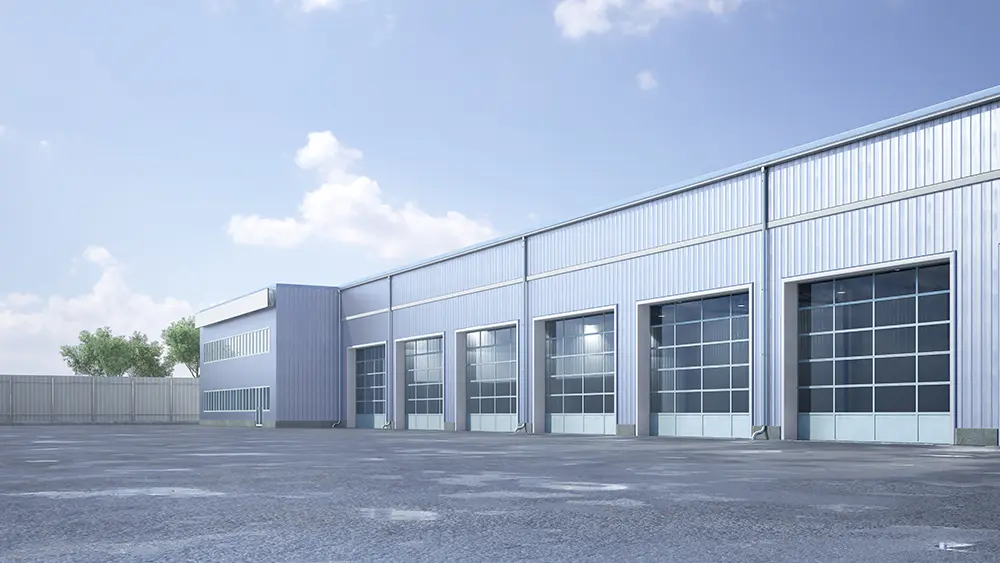
To ensure the safety of employees, many countries have binding laws and regulations mandating accident prevention inspections. Businesses, therefore, have legal obligations to guarantee the health and safety of employees. These responsibilities include regular inspections by qualified professionals, the careful documentation of results, rectification of any shortcomings, the training of employees and compliance with legal requirements. Specific requirements may vary depending on the type of equipment in question and local laws. Therefore, companies are obliged to properly fulfil these legal requirements. Non-compliance can lead to legal consequences, including fines and liability claims.
One of the aims of carrying out UVV inspections is to minimise liability risks. In the event of an accident in a workplace, where required inspections were neglected or known safety issues were ignored, the business may be subject to legal repercussions. These can include criminal prosecution, damage claims, fines, plant shutdowns or reputational damage. Exact consequences vary depending on local laws and the circumstances of the incident. It is therefore crucial to comply with the legal requirements for UVV inspections and maintain occupational safety in order to avoid legal issues and prevent liability claims.
In Germany, the Ordinance on Industrial Safety and Health (BetrSichV) regulates the health and safety requirements for the use of equipment in a workplace. UVV inspections are a proven way to fulfil the Ordinance and ensure that work equipment meets the required safety standards.
In summary, UVV inspections are essential to guarantee health and safety in the workplace, meet legal requirements, minimise liability risks and comply with the Industrial Safety Ordinance. They also involve a thorough inspection of work equipment and require competent personnel to ensure safety and legal compliance.

UVV inspections are carried out in different workplaces and on different types of work equipment and systems. The exact method and location of a UVV test depends on the specific German Social Accident Insurance (DGUV) regulations that apply to the workplace in question. Below are some examples of where UVV inspections should be carried out at regular intervals:
1. Electrical systems and equipment: UVV inspections of electrical systems and equipment, including electrical devices and installations, are carried out in companies where electricity is used. These tests include the inspection of electrical cables, switchgear, sockets, switches, machines and other electrical devices.
2. Equipment and machinery: UVV inspections of equipment such as hoists, forklifts, construction machinery, tools and other hardware are carried out in workshops, factories and construction sites. The purpose of these tests is to ensure the safe use of any equipment.
3. Pressurised containers and systems: In industries in which pressurised containers and pipelines are used, UVV inspections are carried out to ensure the operational safety of pressurised systems and compliance with pressurised equipment directives.
4. Storage and shelving: Storage and shelving systems are inspected in warehouses and logistics centres to ensure that they are stable and safe.
5. Vehicles and transportation equipment: UVV inspections for vehicles such as lorries, buses and forklifts are carried out in transport companies and logistics firms.
6. Personal protective equipment (PPE): The inspection of PPE, such as helmets, safety shoes and protective eyewear, is often carried out in various workplaces where such protective equipment is required.
It is important to consult the relevant regulations and ensure that the inspections are carried out properly in accordance with the applicable specifications and guidelines.

The scope of a UVV inspection may vary, depending on the type of equipment to be inspected and the specific regulations and requirements of the workplace. However, there is a standard procedure that must generally be followed for all UVV inspections.
UVV inspections follow a clear procedure. Although the inspection procedure may vary depending on the type of work equipment or systems to be inspected, the following steps are generally included in every inspection process:
The UVV inspection procedure is a structured and methodical process that helps to identify safety issues and rectify problems before they become serious hazards. It is vital that companies plan the inspection process carefully and ensure that qualified inspectors are used to guarantee reliable results.

Conducting UVV inspections requires qualified and authorised personnel to ensure compliance with safety standards in the workplace. The exact requirements and authorisation to carry out these inspections can vary from between states and industries. Typically, the following are authorised to conduct an inspection:
Specialists and inspection engineers: Specialists and inspection engineers are specially trained and certified to carry out safety tests and inspections. They have comprehensive knowledge of current standards and can carry out UVV inspections competently.
Qualified electricians: Qualified and appropriately trained electricians must be used for UVV inspections of electrical systems and equipment. They are able to assess electrical hazards and ensure that all systems comply with the applicable electrical safety regulations.
Engineers and technicians: In some cases, engineers and technicians who have the necessary expertise and experience can be appointed to carry out UVV inspections. This is especially the case in industries where specific technical expertise is required.
In-house inspectors: In certain companies, in-house auditors or inspectors are tasked with carrying out regular UVV inspections. These auditors should have the necessary expertise and training to carry out inspections properly and in accordance with applicable regulations.
As safety in the workplace often depends on the competence and professionalism of the inspectors, the selection of qualified personnel is essential. We generally recommend using external service providers for the purpose of UVV inspections.
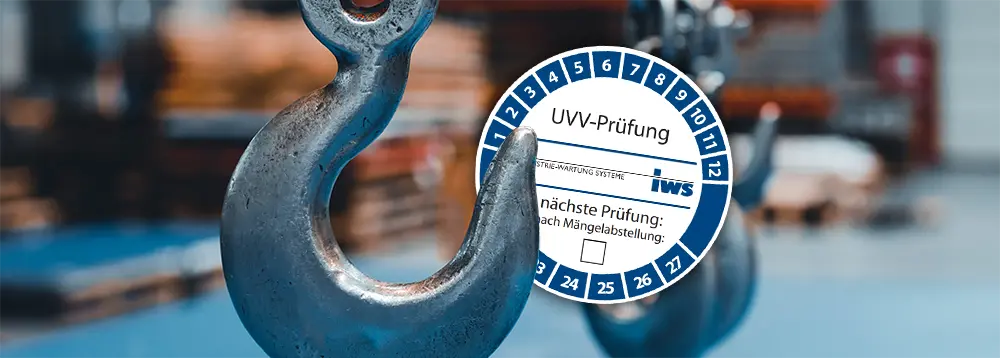
Correct documentation is crucial in order for UVV inspections to comply with the applicable regulations and create a solid basis for future safety measures. This documentation usually incorporates:
Inspection reports therefore serve as proof of compliance with accident prevention regulations and as a basis for the continuous improvement of workplace safety. They are essential to ensure the safety of your employees and in fulfilling all legal requirements.

The aim of a UVV inspection is not only to identify shortcomings in safety standards, but also to rectify them effectively. In the following section, we discuss the steps that should be taken after faults have been identified.
These measures are crucial to ensure continued workplace safety and to confirm that any problems identified are resolved effectively. They are an integral part of the UVV inspection process.
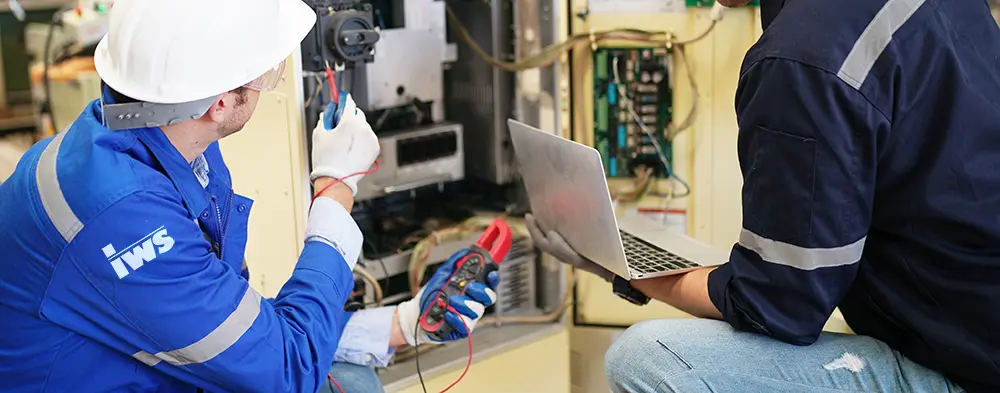
At IWS-Schmalkalden, we know that safety has the highest priority. That’s why we offer you a unique and comprehensive package for UVV inspections that goes above and beyond the norm.
IWS-Schmalkalden strives to ensure the highest level of professionalism and full customer satisfaction. Our comprehensive range of services for UVV inspections ensures that your safety needs are met by experienced hands. Place your trust in the highest safety standards and contact us to receive a tailor-made quote!
The frequency with which UVV inspections must be carried out depends on various factors, including the country in question, the type of equipment and systems, the relevant industry and individual regulations. In Germany, the accident prevention regulations (UVV) are generally laid down in DGUV Regulation 3 (formerly BGV A3) for electrical systems and equipment as well as in various other DGUV regulations and rules.
DGUV Regulation 3, for example, stipulates that electrical systems and equipment must be tested regularly. The exact intervals at which these tests must be carried out are explicitly specified. As a rule, inspections are required at prescribed intervals, depending on the type of equipment and its intended use. We emphasise that you should familiarise yourself with the specific recommendations for your industry and your equipment to ensure that UVV inspections are carried out properly and fully comply with all legal requirements.
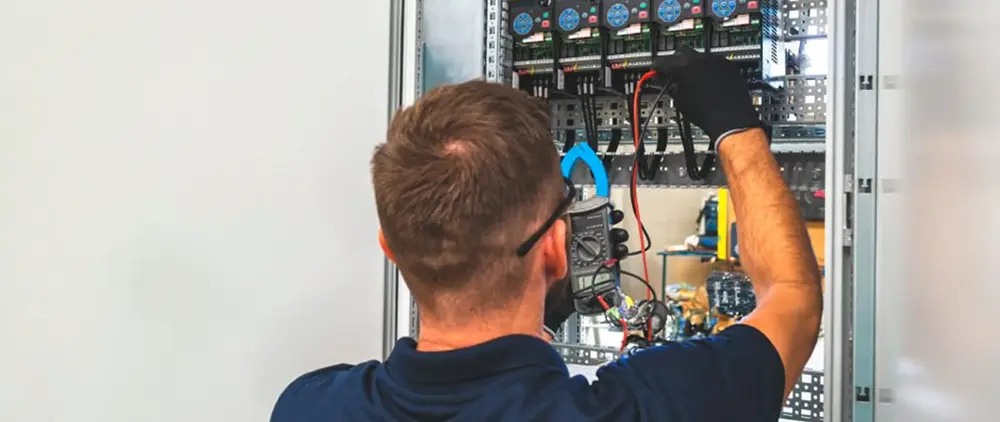
DGUV Regulation 3 defines the safety and liability protection of the German Social Accident Insurance and organises electrical safety in businesses. The regular testing of electrical systems and equipment to detect and prevent hazards is a valuable safety measure. The regulation also stipulates repeated inspections at specific intervals to ensure operational safety and speedy hazard detection. New systems and equipment must undergo an initial inspection before they are used for the first time, so that upheld safety standards can be comprehensively verified. The tests include the inspection of cabling, safeguards and other safety-related factors. Conscientious documentation, producing inspection reports and test certificates, is crucial in order to record the observed safety standard and corresponding shortcomings. The regulation requires the immediate rectification of any shortcomings in order to prevent accidents. Training and instruction are also important to raise employee awareness of electrical hazards and ensure safety when working with electrical equipment.
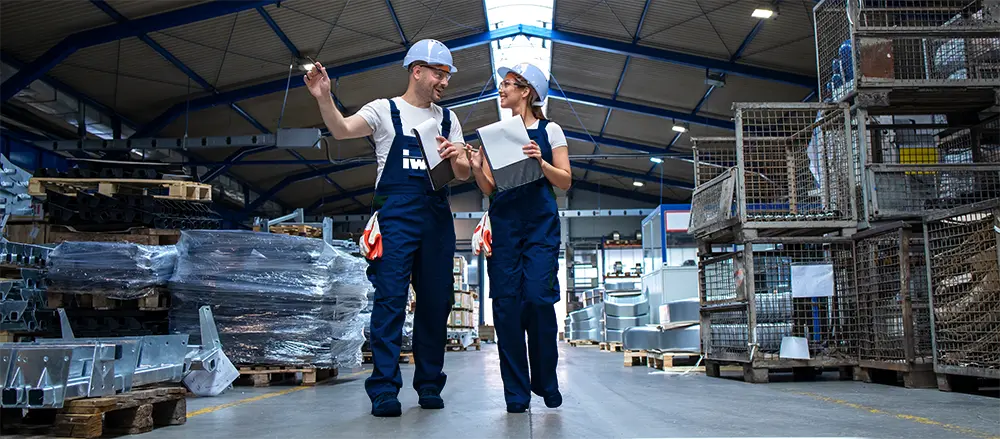
The successful completion of UVV inspections require a clear division of roles and responsibilities. This section explains who is involved in the inspection process and what their duties are:
The inspector is the central figure during UVV inspections. It is their task to carry out the inspection in accordance with the applicable regulations. The inspector is responsible for the assessment of the equipment or system, the identification of shortcomings and the preparation of inspection reports.
The company that commissions the UVV inspection is responsible for organising the inspection and ensuring that it is carried out in accordance with legal requirements. The company must also provide any necessary resources and subsequently take measures to rectify any shortcomings identified.
The management of the company is responsible for implementing recommendations and corrective actions resulting from an audit. They must ensure that safety vulnerabilities are rectified and that the working environment remains safe.
The employees have the responsibility to comply with safety-related regulations and procedures. They should also report any shortcomings or unsafe conditions they discover during their work.
The clear allocation of roles and responsibilities helps to ensure that UVV inspections are carried out efficiently and effectively. Each party plays a critical role in ensuring workplace safety and compliance with legal requirements.
Our commitment to the highest quality of service is reflected in our comprehensive range of UVV inspection services. We pride ourselves on offering our customers not only a first-class service, but also careful and comprehensive support to ensure safety in the workplace. In the text below we take a look at the wide range of UVV inspections offered by IWS-Schmalkalden.
Offered UVV inspections in accordance with statutory regulations and ordinances from the trade association level to the European level:
Overhead cranes (1 girder)
Gantry cranes (2 girder)
Column-mounted jib cranes
Electric hoists
Gantry cranes
Wall-mounted jib cranes
Portal cranes

For UVV inspections, it is generally advisable to have inspections at fixed intervals. A regular inspection schedule has several advantages:
Legal compliance: In many countries and industries, laws and regulations stipulate that certain equipment and systems must be inspected regularly. By adhering to a fixed inspection schedule, companies ensure that they fulfil these legal requirements.
Continuous monitoring: A fixed UVV inspection schedule enables the continuous monitoring of equipment and systems. This means that potential safety problems are recognised at an early stage before they can lead to more serious problems.
Preventive maintenance: A fixed inspection schedule is also useful for preventive maintenance. Regular inspections and maintenance work allow defects to be rectified and worn parts to be replaced in a timely fashion. This helps to extend the service life of equipment and minimise unplanned downtime.
Employee safety: Regularly scheduled UVV inspections boost employee safety, as potential hazards and risks are identified and rectified at an early stage. This minimises the risk of injury and protects the health of employees.
Planning and resource management: Setting a fixed audit schedule enables companies to integrate UVV inspections into their operational routines. This also allows for the timely allocation of resources, whether personell or equipment based.
The exact interval between audits depend on differing factors, including the type of equipment and systems to be inspected, their frequency of use and the applicable legal requirements. It is important that these intervals are carefully planned and documented to ensure compliance with regulations and to guarantee safety in the workplace.
IWS-Schmalkalden is happy to help create an audit schedule for your UVV inspections. Contact us to create customised inspection plans that meet your individual and legal requirements. Our experienced inspection specialists are at your disposal to help you ensure workplace safety in your business.

We understand the importance of preventative safety measures and endeavour to help you reduce risks and comply with legal standards. Our commitment to first-class inspection services and comprehensive safety solutions has made us a trusted partner for businesses in Schmalkalden and beyond. Contact us today to learn more about our services and about ways to improve your workplace safety. We look forward to working with you and contributing to a safer working environment.
Our UVV inspections are carried out in accordance with the current statutory regulations and ordinances. We take safety in the workplace seriously and ensure that your equipment, machines and systems comply with the latest standards. Our inspections identify potential sources of danger at an early stage and ensure that you act in accordance with the law.
We know how important it is to keep track of inspection dates. That’s why we offer comprehensive inspection scheduling for your systems and devices. We remind you of upcoming inspections so that you don’t have to worry about possible delays or disruptions. Your safety and efficiency are our top priority.
Our trained service personnel have the necessary expertise and experience to carry out UVV inspections at the highest standard. They are experts in identifying safety defects and are familiar with the specific requirements of different industries and working environments. IWS-Schmalkalden places particular emphasis on continuous training and development to ensure that our team is always up to date with the latest technology and legislation.
Contracting IWS for UVV inspections offers many advantages. We are an independent and neutral service provider, guaranteeing the objectivity of any undertaken inspections. We also have specialised expertise and in-depth knowledge of all occupational safety regulations. We supply our own equipment, which reduces costs and workload for companies. IWS carries out audits efficiently and conscientiously ensures compliance with legal regulations, which prevents legal problems and penalties down the track. In the long term, hiring an external service provider is cost-effective as it can prevent accidents and downtime due to safety issues. We are a flexible company and can be utilised as and when required. In addition, we offer training and specific advice on improving safety. Put your trust in IWS: we provide high-quality inspections and detailed reports to ensure occupational safety in your company.
Discover IWS GmbH